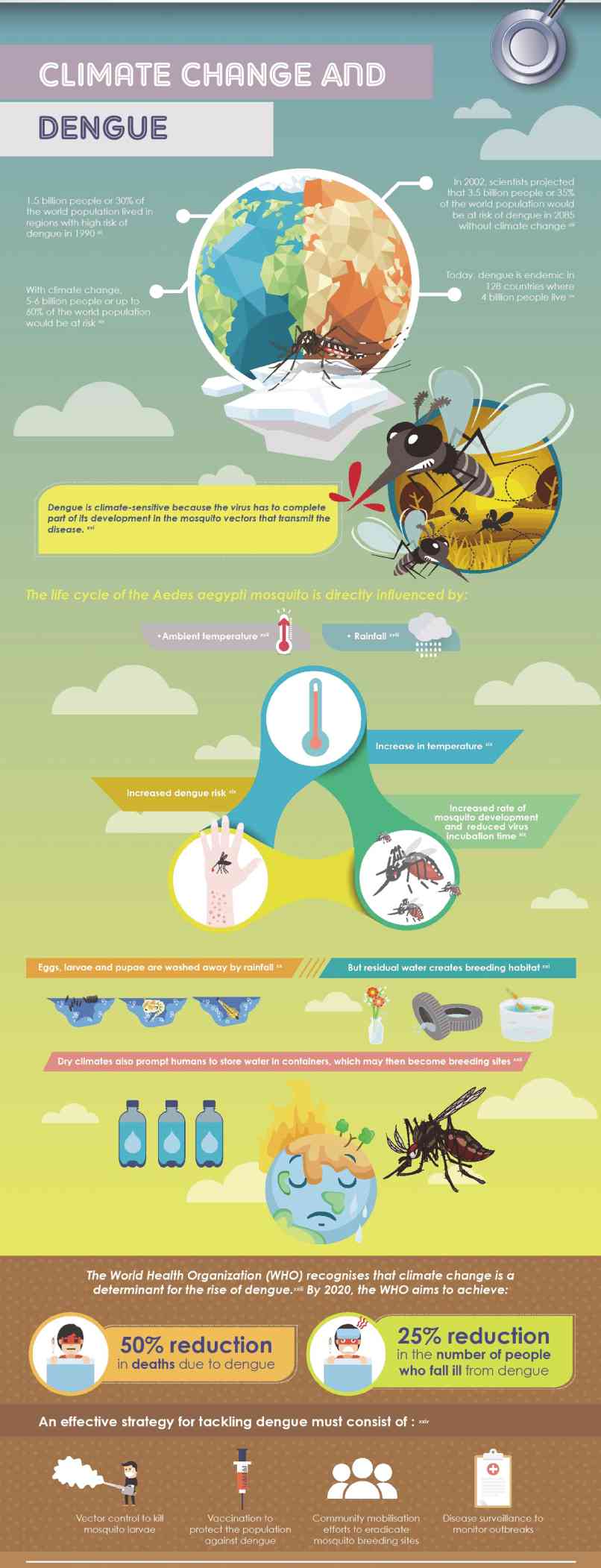The World Health Organization regards dengue as the world’s most dominant mosquito-borne viral disease with incident rates that have increased 30-fold in the past 50 years.
Climate change is partly to blame because scientists said 5 to 6 billion people would now be at risk. Were it not for this factor, only 3.5 billion people would have been at risk.
According to the National Aeronautics and Space Administration (Nasa), global average surface temperature rose 0.6 to 0.9 degrees Celsius between 1906 and 2005, and the rate of temperature increase has nearly doubled in the last 50 years. The same agency said temperatures are certain to go up further.
With such increase in temperature, it would be interesting to note that the number of countries where dengue is endemic has increased. Severe dengue (previously known as dengue hemorrhagic fever) was first recognized in the 1950s during dengue epidemics in the Philippines and Thailand. Before 1970, only nine countries had experienced severe dengue epidemics.
Today, dengue affects 128 countries— where 4 billion people live—and has become a leading cause of hospitalization and death among children and adults.
Ambient temperature, rainfall
Dengue is carried primarily by the Aedes aegypti (also by Aedes albopictus in some areas) mosquitos that have a life cycle directly influenced by ambient temperature and rainfall.
While eggs, larvae and pupae are washed away during rainfall, the residual rain water trapped in discarded tires, uncovered containers, pots and anything that could collect rainwater (as small as a bottle cap) create a convenient breeding ground for these mosquitos.
Even if it’s not raining, the dry days prompt people to store water in containers where mosquitos have a chance to breed.
This is why the Department of Health (DOH), despite its ongoing Dengue School-Based Immunization program that immunizes children 9 years and older enrolled in Grade IV for the school year 2015-2016 in public schools in Regions III, IV-A and NCR, is still continuing its 4S as well as Aksyon Barangay Kontra Dengue or ABKD campaigns.
The 4S stands for Search and destroy mosquito breeding places; use Self-protection measures; Seek early consultation for fevers lasting more than two days; and Say yes to fogging when there is an impending outbreak. The ABKD on the other hand, is a community-wide activity that centers on cleanliness and elimination of breeding sites.
Higher number
As of June 25, the DOH epidemiology bureau already recorded 57,026 dengue cases nationwide (from Jan. 1), which is 35.7 percent higher than the 42,026 cases recorded during the same period last year.
There was also a higher number of dengue deaths during this period: 248 compared with 148 recorded during the same period last year.
The regions with the most number of cases, the DOH reported, include Calabarzon with 7,463 (13.1 percent); Central Visayas, 5,783 (10.1 percent); Central Luzon, 5,586 (9.8 percent); northern Mindanao, 5,521 (9.7 percent); and Soccsksargen, 4,583
(8 percent).
